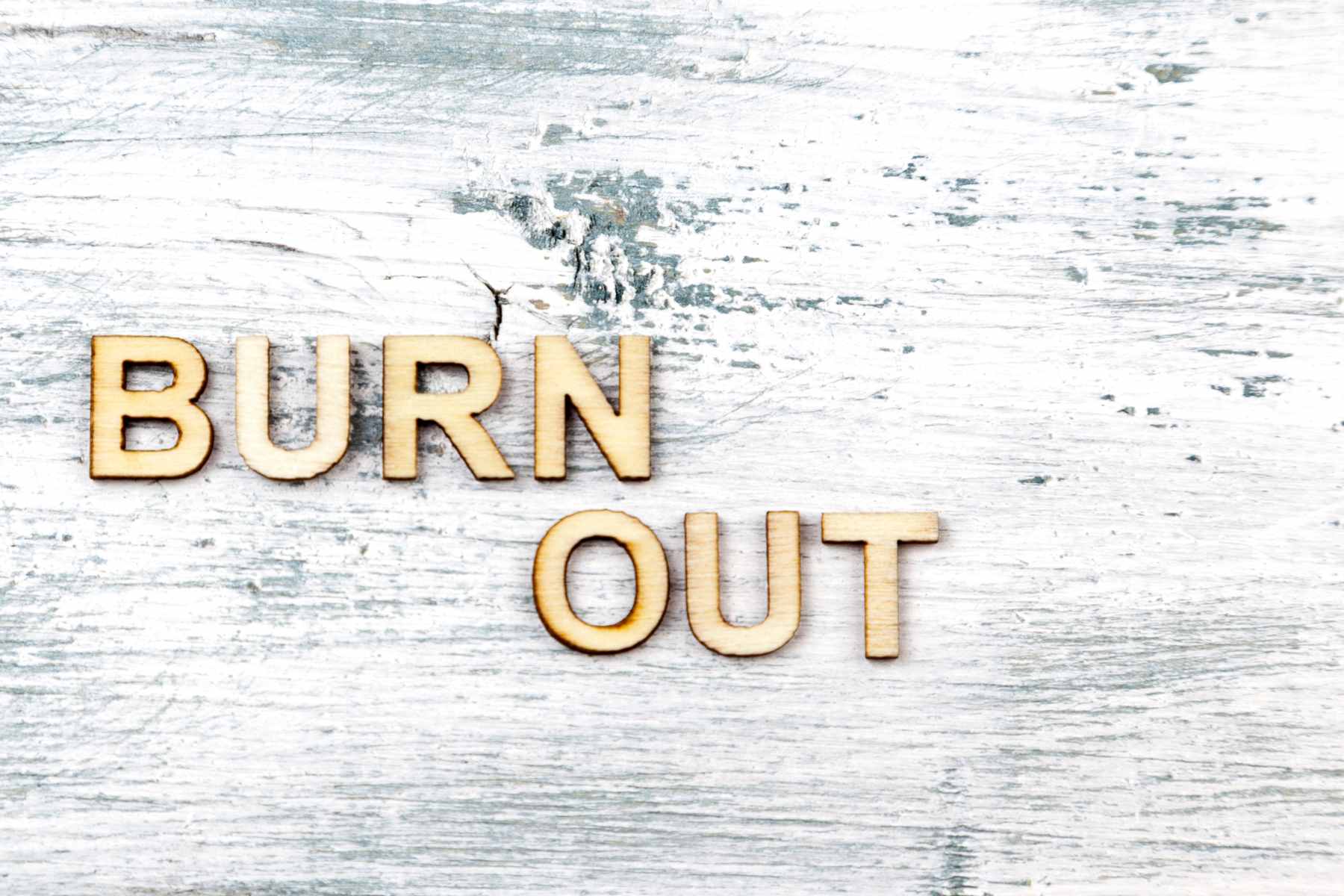Michael Gungor, author and singer, says that “Burnout is what happens when you try to avoid being human for too long.”
These days, we hear a lot about “burnout.” Many people think it’s just feeling a bit overworked, stressed, or tired after a long week. But burnout is actually a specific clinical issue with distinct symptoms. The signs include a sense of detachment, reduced productivity, and constant fatigue that doesn’t go away with rest.
Waking up and dreading the day ahead, feeling like you’re running on empty, and struggling to find any enthusiasm or motivation for your tasks—that’s burnout.
According to the National Institute of Mental Health (NIMH), 67% of U.S. employees have experienced burnout at some point, this statistic alone shows the urgency of addressing this problem. Women are particularly at risk, with 46% reporting higher levels of burnout compared to 37% of men. Younger workers aren’t immune either, with 85.23% of those aged 18-24 reporting burnout, making them one of the most affected groups.

I’ve seen this firsthand in my interactions with people from various professions. Whether it’s healthcare workers overwhelmed by long hours or entrepreneurs managing the demands of running a business, both job burnout and burnout in general are more common than we might think. It can lead to a state of chronic physical and emotional exhaustion, draining your energy and affecting your mood. This serious condition has lasting effects on both your mental and physical health and, over time, can lead to serious issues like chronic fatigue and illness.
Understanding these signs is the first step in addressing burnout and taking steps to recover and regain balance in your life. In this article, I will share insights and practical habits that can be incorporated daily, weekly, monthly and yearly to help prevent burnout. These habits are simple, actionable steps that can make a significant difference in your life.

Burnout Symptoms
Emotional Exhaustion
One major symptom of burnout is emotional exhaustion. This isn’t just about being physically tired, it’s a state of emotional depletion, where you feel unable to handle anything more emotionally. Even if you get a full night’s sleep or take time off, you may still feel completely drained, unable to recover from burnout or reduce your stress. Emotional exhaustion makes it difficult to engage with others or complete daily tasks, leading to feelings of emptiness and detachment from both personal and professional areas of your life.
Since burnout can affect your physical and emotional reserves, keeping a healthy balance between work and self-care is essential to prevent burnout in the future.

Cynicism or Depersonalization
Another symptom is cynicism, also known as depersonalization. You may find yourself becoming irritated and short-tempered with co-workers, clients, or family members, feeling like one more request will cause you to snap. It can also foster distrust, making you believe others have bad intentions.
Depersonalization leads to a sense of detachment from your job and a negative attitude toward the people you work with, which can damage professional relationships and lower workplace morale. It serves as a defense mechanism against overwhelming stress, but this withdrawal only increases isolation and dissatisfaction. Burnout may look different for everyone, but burnout and depression are often interconnected, and untreated depersonalization can further worsen mental health.
Feeling Ineffective
The third major symptom is feeling ineffective. Even if you perform well, it might feel pointless or unfulfilling, especially if structural issues at work make it seem impossible to accomplish what matters to you. Maybe your job no longer aligns with your values, leaving you questioning your career path and lacking motivation. This sense of personal ineffectiveness can sap your confidence and make you feel disconnected from your achievements. Burnout can affect your physical and mental well-being, making it harder to find value in your work or feel accomplished. Recognizing this symptom is essential because making changes, such as setting boundaries, practicing physical exercise, or finding a place to talk, can help you detach from work, boost morale, and prevent burnout in the future.

Causes of Burnout
Heavy Workload
A heavy workload is a major contributor to burnout. When there’s too much to do, it becomes overwhelming, creating a sense of constantly playing catch-up. This perpetual stress reduces job satisfaction and makes it difficult to make changes that could improve productivity. The Journal of Applied Psychology highlights that employees with excessive workloads are at a higher risk for burnout because they lack time to recover and recharge. This can create a vicious cycle: the stress from an overwhelming workload reduces productivity, leading to an even greater backlog. Additionally, having little control over work or not feeling appreciated for your efforts only adds to the pressure. Burnout also arises when you put in countless hours without recognition or reward, this lack of acknowledgment is disheartening and accelerates the path to burnout.
Environmental Factors
The work environment also plays a critical role in burnout. Organizational culture can either prevent or fuel burnout, when long hours and constant availability are expected, burnout becomes more likely. External pressures like economic instability or job insecurity exacerbate these challenges, making it harder to make changes and maintain well-being. Without supportive structures, stress can quickly spiral, leading to emotional exhaustion and burnout also affecting areas beyond work.

Personal Factors
Our personal habits and traits play a significant role in burnout. For example, perfectionism can drive people to work longer and harder, constantly striving for unattainable standards. This drains energy and leads to chronic dissatisfaction with achievements. Work-life imbalance is another key factor, when boundaries between personal and professional life are blurred, work can easily spill into downtime, leaving little opportunity to recharge. Whatever is causing stress in personal life, whether it’s unmet expectations or unresolved issues, can amplify burnout at work. A lack of support from family, friends, or co-workers further compounds stress, making it harder to manage responsibilities and cope effectively.
Lack of Reward
Not feeling rewarded for your work is another significant element that causes burnout. Rewards, both external, such as recognition, and internal, such as a sense of accomplishment—are crucial for job satisfaction and motivation. When employees feel their efforts go unnoticed or that there is an imbalance between effort and reward, stress increases. This imbalance can foster depression and burnout, making individuals feel unmotivated and undervalued. Finding ways to recognize contributions and celebrate progress—whether personal or professional—can make you feel better, reinforcing motivation and preventing burnout from taking hold.

Consequences of Burnout
Physical Effects
One of the most immediate impacts of burnout is on our physical health. Chronic fatigue is common, leaving us feeling tired no matter how much rest we get. This constant state of exhaustion can weaken our immune systems, making us more susceptible to illnesses like colds and flu.
Mood and Energy Levels
Emotionally, burnout can be devastating. It often brings feelings of helplessness and detachment. You might find yourself feeling indifferent about things you once cared about deeply. This emotional numbness can spill over into your personal life, affecting your relationships with family and friends. It’s hard to stay engaged and connected when you feel emotionally drained.

Professional Consequences
Professionally, it’s challenging to stay productive and creative when you’re running on empty. Tasks that used to be easy may start to feel insurmountable, and your overall job performance can suffer. This, in turn, can lead to a vicious cycle of stress and underachievement, further entrenching the feelings of burnout.
Recognizing these consequences is crucial because it underscores the importance of addressing burnout proactively. Only then can we start taking steps to prevent burnout and maintain a healthier, more balanced life.

Practical Tips for Burnout Prevention
By focusing on simple daily, weekly, and monthly habits, we can find balance, manage stress, and avoid burnout altogether. Let’s break it down into practical steps you can start using right away. Remember, it’s all about small, consistent actions. Each habit, no matter how small, adds up to help you take care of yourself.
Here are some habits that I’ve personally found incredibly helpful, and I hope they’ll work for you too.

Daily Habits to Avoid Burnout
Morning Routine: Starting the Day Right
Starting your day on the right foot sets the tone for everything that follows. For me, the morning is sacred. I’ve made it a habit to wake up early, before the day gets busy. The first thing I do is hydrate with a big glass of warm water. This simple action wakes me up gently and helps kickstart my metabolism.
After that, I go for a walk. Being outside, breathing in the fresh air, and moving my body makes me feel alive and ready to start the day. If you can, try to incorporate some form of exercise, whether it’s a walk, a run, or a quick yoga session. It doesn’t have to be long, just enough to get your blood flowing and your mind clear.
Once I’m back home, I spend a few minutes meditating. This helps center my thoughts and set a positive intention for the day. If you’re new to meditation, start with just five minutes. It’s amazing how much difference a few quiet moments can make.
For a nutritious boost, I love incorporating green smoothies into my daily routine. I pack them with leafy greens, a handful of berries, protein powder and more. It’s a simple way to ensure I’m getting essential nutrients. Physical and mental health are deeply interconnected, and taking steps to care for your body can help mitigate the effects of burnout.

Time Management Techniques to Deal with Burnout
Managing your time effectively can significantly reduce stress. One popular technique is the Pomodoro Technique, invented by Francesco Cirillo in the late 1980s. Cirillo, who was a university student at the time, developed this method to improve his productivity and focus during study sessions. The technique is named after the tomato-shaped kitchen timer (“pomodoro” is Italian for tomato) that Cirillo initially used to time his work intervals. It’s straightforward and really helps in staying focused and productive.
Here’s how it works:
Pick a task you want to work on.
Set a timer for 25 minutes and work on the task without any interruptions.
When the timer goes off, take a 5-minute break.
Repeat this process four times, then take a longer break (15-30 minutes).
Breaking your work into these small, manageable chunks makes it less overwhelming and helps maintain concentration. Along with this, prioritize your tasks. Tackle the hardest ones first when your energy levels and concentration are at their peak. It’s a great way to ensure you get the most important things done without feeling drained.
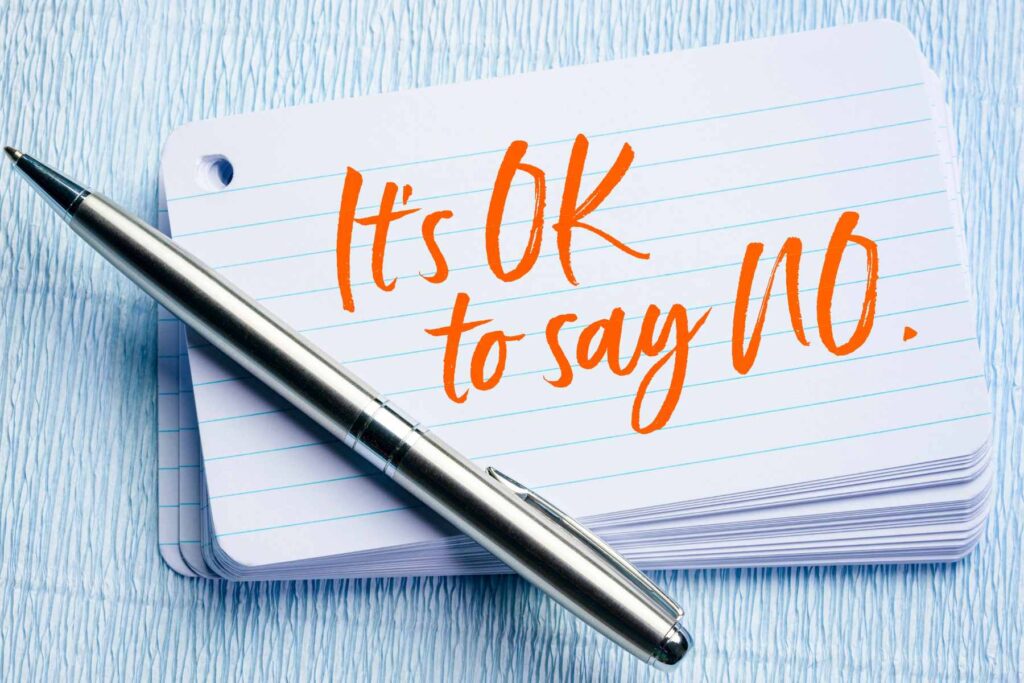
Setting Boundaries
Learning to say no is crucial in avoiding burnout. It’s something I had to learn the hard way. Saying no isn’t just about declining extra tasks, it’s about prioritizing your well-being. Set clear boundaries with your time. For example, if your workday ends at 6 PM, avoid checking emails or taking work calls after that time.
Regular Breaks to Avoid Job Burnout
Taking regular breaks throughout the day can help avoid stress and maintain your energy levels. Make it a point to step away from your desk for at least five minutes every hour. Stretch, take a few deep breaths, or walk around. These mini-breaks can refresh your mind and body, making you more productive in the long run.
Lunch breaks are especially important. Make sure you take at least 30 minutes to have a proper meal. During this time, unplug from your devices. Chew your food properly and enjoy it mindfully. Make it a non-negotiable time for yourself, and don’t allow work to creep into that space. Explain to your colleagues and family that this is your time to recharge. Perhaps even take a short walk outside and allow yourself to decompress. I’ve found daily walks in nature to be incredibly grounding.

Evening Routine
In the evening, I make it a habit to unwind and disconnect from my devices. Blue light from screens can interfere with your sleep, so I wear blue light-blocking glasses, especially if I need to use my computer or phone late at night. Winding down properly in the evening is just as important as starting your day right.
Creating a bedtime routine can help signal your body that it’s time to relax. Whether it’s reading a book, taking a warm bath, or practicing some light stretching, find what helps you unwind. Aim for 7-8 hours of sleep each night. This is crucial because, according to traditional Chinese medicine (TCM) and the Chinese body clock, our organs rejuvenate at specific times during the night, and proper sleep is essential for this process.
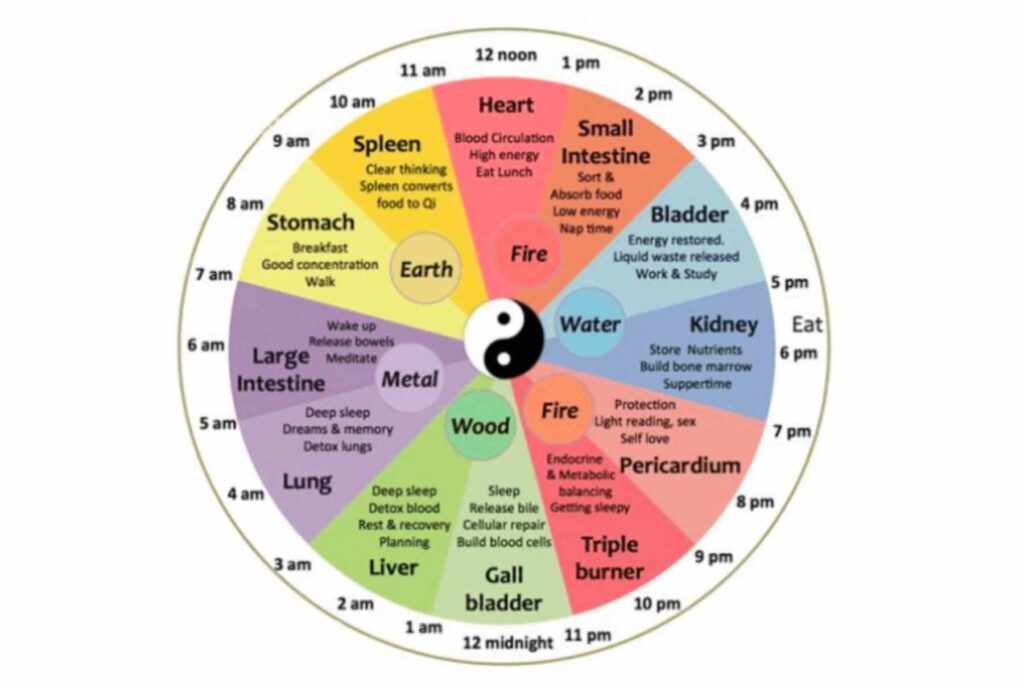
For example, the liver starts its detox process around 1 AM, and if you’re not sleeping, you’re not giving it the chance to do its job properly. Adequate sleep helps regulate liver enzymes, promotes detoxification, supports glycogen storage, and maintains hormonal balance. Other organs also follow specific cycles. For example, the gallbladder is active from 11 PM to 1 AM, assisting in fat digestion and detoxification. The lungs are most active from 3 AM to 5 AM, which is why many respiratory issues can feel worse during this period and the large intestine is active from 5 AM to 7 AM, making it an ideal time for bowel movements and detoxification. Understanding and respecting your body’s need for rest is key to preventing burnout.

Weekly Habits to Avoid Burnout
Unplug for a Day
Taking at least one full day each week to unplug is crucial. This is your day to step away from work, turn off your phone, and spend quality time doing things you love. The weekend is a perfect time for this. I make it a point to spend this day with my family or enjoying hobbies that bring me joy. Whether it’s a hike in nature, playing golf, or simply lounging with a good book, this day is about recharging.
For those with busy schedules, it might feel impossible to take a whole day off. Start small if you need to, maybe just a half-day at first. The key is to be intentional about disconnecting from your work and focusing on activities that make you happy. I’ve found that this not only helps reduce stress but also makes me more productive and focused when I return to work.

Task Management
Weekly planning can make a significant difference in managing stress. At the start of each week, take some time to prioritize your tasks. Identify the hardest task—the one you’re likely to procrastinate on—and complete it first thing in the morning when you have the most energy and focus. This approach, often referred to as “eating the frog,” ensures that you get the most challenging work out of the way early, which can make the rest of your week feel more manageable.
Scheduling time for self-care is equally important. Remember to block out time in your calendar for activities that nourish your body and soul. This could be a yoga class, a session with a therapist, or simply some quiet time for reflection. Treat these appointments with the same importance as work meetings.

Monthly Habits to Avoid Burnout
Rewarding yourself regularly is a great way to stay motivated and recognize your accomplishments so treat yourself to something special at least once a month! This could be a spa day, a massage, or even a concert. The idea is to give yourself a break and something to look forward to. Self-love and rewards are important for maintaining a positive mindset. They remind you that you deserve to be taken care of and appreciated. Whether it’s a small treat or a bigger indulgence, these monthly rewards can help keep your spirits high and your stress levels low.

Yearly Habits to Avoid Burnout
Once a year, consider taking a more extended break from daily life. Blackout retreats, where you completely disconnect from phones and technology, can be incredibly restorative. These retreats often involve fasting from technology and sometimes even food, giving your body and mind a complete reset.
These retreats don’t have to be expensive or far away. You can create your own retreat experience by camping in a nearby park or renting a cabin in the woods. The important thing is to allow yourself time to unwind, reflect, and recharge.
Incorporating these daily, weekly, monthly, and yearly habits into your routine can help prevent burnout and maintain a balanced, fulfilling life. It’s all about taking consistent, intentional steps to care for yourself.

Once a year, consider taking a more extended break from daily life. Blackout retreats, like the Wellness is Life Retreat, where you completely disconnect from phones and technology, can be incredibly restorative. These retreats often involve fasting from technology and sometimes even food, giving your body and mind a complete reset.
These retreats don’t have to be expensive or far away. You can create your own retreat experience by camping in a nearby park or renting a cabin in the woods. The important thing is to allow yourself time to unwind, reflect, and recharge.
Incorporating these daily, weekly, monthly, and yearly habits into your routine can help prevent burnout and maintain a balanced, fulfilling life. It’s all about taking consistent, intentional steps to care for yourself.

Additional Tips
Cut Back on Coffee
Ever struggled with coffee making you edgy and anxious? You’re not alone. People metabolize caffeine differently, and genetics play a significant role in this. For example, certain genetic variations can affect the efficiency of the enzyme CYP1A2, which is responsible for metabolizing caffeine in the liver. Some people metabolize caffeine quickly, while others do so more slowly, leading to varied effects. Slow metabolizers might experience heightened alertness and jitters, while fast metabolizers may not feel much effect at all.
For me, coffee often led to anxiety, irritability, and energy crashes, making it hard to maintain steady productivity. Switching to Paraxanthine (Paraxan™) has been a game-changer. Paraxanthine is a metabolite of caffeine that offers the benefits of alertness and focus without the downsides. Since making the switch, I’ve noticed more consistent energy levels and a reduction in anxiety and jitters.
If you’re still keen on drinking coffee, consider trying Bulletproof Coffee. This blend includes MCT oil and grass-fed butter, providing sustained energy without the typical crash. By combining high-quality coffee with these healthy fats, Bulletproof Coffee offers several benefits such as keeping you full longer, improved cognitive function, and a steady energy boost throughout the day. This unique mix helps slow down caffeine absorption, reducing the spike and subsequent crash that regular coffee can cause.

Try the 4-7-8 Breathing Technique
One effective technique for managing stress is the 4-7-8 breathing exercise, popularized by Dr. Andrew Weil. Here’s how it works: you inhale deeply for four seconds, hold your breath for seven seconds, and then exhale slowly for eight seconds. This method activates your parasympathetic nervous system, which promotes relaxation and helps reduce stress. Practicing this technique regularly can make it an automatic response to stress, it can also help with getting better sleep and reducing anxiety.
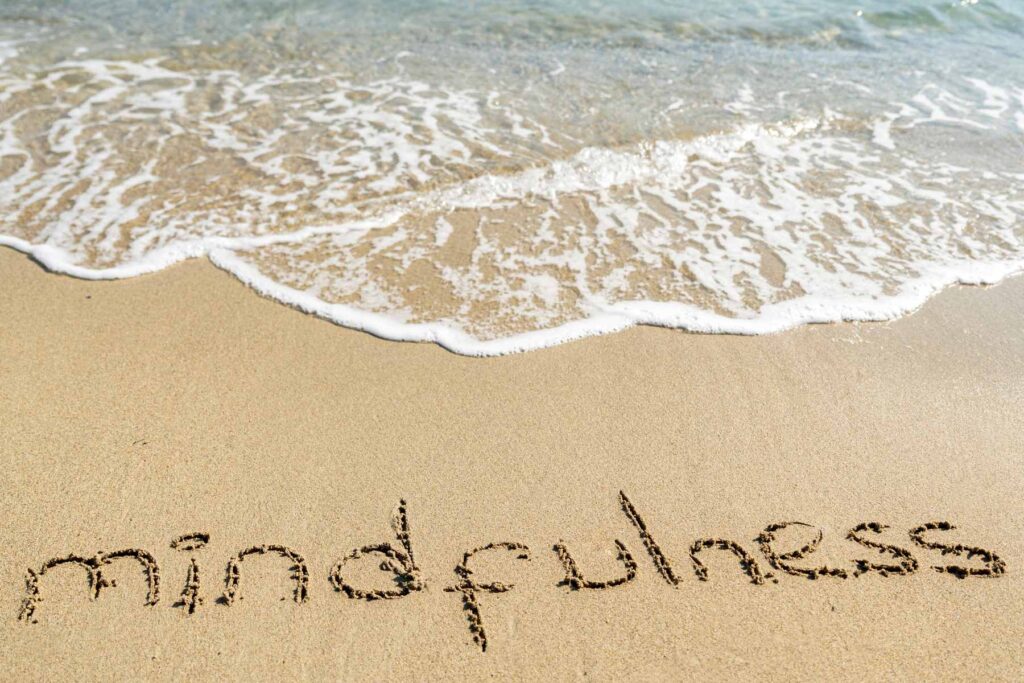
Master the Physiological Sigh to Reduce Stress Instantly
Most of us have heard about the benefits of mindfulness, meditation, exercise, and getting enough sleep. These practices are essential for maintaining our mental and physical health. Mindfulness helps us stay present, meditation can reduce stress, exercise boosts our mood, and sleep is crucial for overall well-being. However, despite knowing these benefits, many of us struggle to incorporate them into our daily lives. The demands of work, family, and other responsibilities often leave us feeling overwhelmed and exhausted, making it challenging to stick to these healthy habits consistently.
An effective and quick way to reduce stress is through a technique known as the physiological sigh. This is a natural response your body has to stress, and you can harness it intentionally to calm yourself down rapidly. The physiological sigh involves a double inhale followed by an extended exhale, which helps clear out carbon dioxide from your lungs and brings immediate relief from stress. This method is especially useful because it works in real-time and can be employed anytime and anywhere, providing a fast and efficient way to manage stress.

Involuntary Activation
Interestingly, we all perform physiological sighs involuntarily when we are stressed or crying, but we often forget that we can also use them consciously to help ourselves relax. This automatic response is built into our bodies, a natural mechanism that kicks in during times of emotional or physical distress. By becoming aware of this, we can use it to our advantage, taking control of our stress response in moments of need.
Scientific Backing
Research conducted by Jack Feldman’s lab at UCLA, along with studies from other institutions, supports the effectiveness of physiological sighs for reducing stress in real-time. These studies have shown that this technique can significantly impact the autonomic nervous system, which governs our body’s state of alertness and calmness.
The way physiological sighs work is fascinating. When you breathe in, your diaphragm moves down, your heart expands slightly, and blood flow slows. Your brain detects this slower blood flow and signals the heart to beat faster. When you exhale, your diaphragm moves up, making the heart smaller and increasing blood flow speed. The brain then signals the heart to slow down. By intentionally making your exhales longer and more vigorous than your inhales, you can use this natural mechanism to reduce your heart rate and calm your stress response.
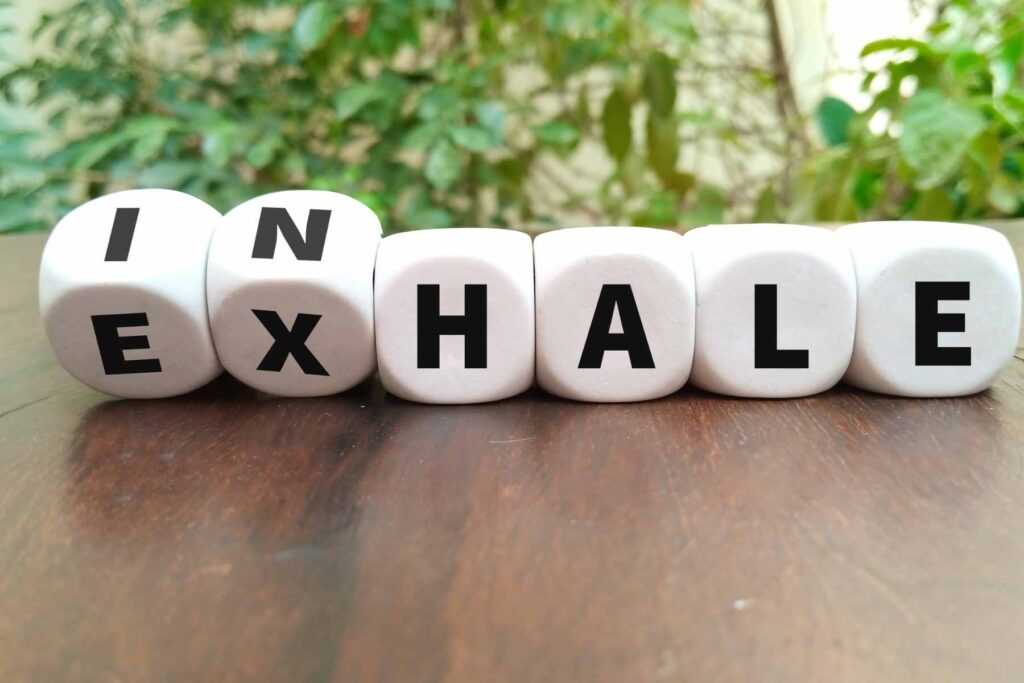
Practical Application
A physiological sigh involves taking a double inhale, where the second inhale is just a bit more air after a full breath, followed by a long, extended exhale. This action helps reinflate the small sacs in your lungs and efficiently expels carbon dioxide, which is often associated with feelings of stress and agitation.
To use physiological sighs to calm yourself, focus on making your exhales longer and more forceful than your inhales. This simple technique works instantly and requires no extensive practice or preparation. It’s a practical tool you can use anywhere and anytime you feel stressed or anxious.
How Are These Techniques Different?
When it comes to stress-relief techniques, the 4-7-8 breathing exercise and the physiological sigh serve different purposes. The 4-7-8 method is more structured, involving longer breath holds to deeply relax your body over a short period. This technique is great for nightly routines or moments when you can sit quietly and focus on your breathing.
The physiological sigh is all about immediate relief. It uses quick double inhales followed by extended exhales to rapidly reduce stress levels. This makes it ideal for quick stress relief in the middle of a hectic day or during stressful situations where you need to calm down instantly.

Did All This Overwhelm You?
Starting small is key. You don’t have to change your whole life overnight. Begin by incorporating one or two small habits, and gradually build from there. Consistency is what makes these changes effective over time. According to a 2009 study published in the European Journal of Social Psychology, it takes 18 to 254 days for a person to form a new habit. The study also concluded that, on average, it takes 66 days for a new behavior to become automatic.
Remember, self-care is not a luxury, it’s a necessity. As the saying goes, “You can’t pour from an empty cup. Take care of yourself first.” If you’re struggling with burnout or just want to improve your overall well-being, don’t hesitate to seek support. Having a solid support system, whether it’s friends, family, or professionals, can make a significant difference. Health coaches, like myself, can provide personalized guidance and help you develop a plan to manage stress, improve your health, and achieve your wellness goals.

Wellness Is Life – To Make You Feel Better
As a health and life coach, I’m deeply committed to helping people who are struggling with stress, life balance, and personal growth. This commitment inspired me to create Wellness Is Life, a retreat program dedicated to disconnecting from the outside world, de-stressing, fasting, and anti-aging with the newest biohacking technologies.
Unwind at your own pace and connect with like-minded people while enjoying the ultimate biohacking experience. Savor meals prepared by a private chef, partake in yoga and meditation, and explore cutting-edge practices, all designed for your personal wellness and rejuvenation. With a passionate and dedicated team, we’ve guided many individuals toward transforming their lives, from corporate clients seeking balance to people looking for renewed purpose and rejuvenation.
One of my core beliefs is the importance of early intervention and prevention. My primary goal is to help people avoid becoming a statistic by steering them away from the challenges I encountered and preventing burnout before it begins. Remember, lasting habits are formed with one small step at a time. Start today, and you’ll see the difference tomorrow.

Conclusion
Burnout is a pressing issue that affects many of us, but by incorporating simple, consistent habits into our routines, we can combat it effectively. Start your day right with a morning routine that includes hydration, exercise, and meditation. Begin by drinking a big glass of warm water to kickstart your metabolism, followed by a walk or some form of exercise to get your blood flowing. Spend a few minutes meditating to center your thoughts and set a positive intention for the day.
Managing your time efficiently using techniques like the Pomodoro Technique and prioritizing your tasks can significantly reduce stress. Remember to set clear boundaries to protect your personal time, and take regular breaks to recharge. In the evening, unwind with a proper routine, use blue light blocking glasses and aim for 7-8 hours of sleep to ensure your body has the rest it needs.
Dedicate one day a week to unplug from work and reconnect with family, friends, or hobbies. This day is crucial for resetting your mind and body. Focus on spending quality time with your loved ones or engaging in activities that bring you joy. During the week, set realistic goals, tackle the hardest tasks first to make your workload more manageable, and be sure to take time off to recharge and schedule time for self-care.

Reward yourself regularly. Once a month, treat yourself to something special like a spa day, a massage, or a concert. These rewards are vital for maintaining motivation and practicing self-love. Consider taking a longer break once a year. A blackout retreat, where you disconnect from technology and spend time in nature, can be incredibly restorative. This extended break allows you to reflect on your experiences, set goals for the upcoming year, and return to your routine feeling refreshed and rejuvenated.
If you’re struggling with burnout or just want to improve your overall well-being, don’t hesitate to seek support. Having a solid support system, whether it’s friends, family, or professionals, can make a significant difference. Health coaches, like myself, can provide personalized guidance tailored to your unique needs. They can help you develop a plan to manage stress, improve your health, and achieve your wellness goals.
I invite you to connect with me for personalized guidance and support. Whether you need help with creating a balanced routine, managing stress, or making healthier lifestyle choices, I’m here to help. Together, we can work towards a more balanced, fulfilling life where burnout doesn’t stand a chance!

Frequently Asked Questions about Burnout
Common signs and symptoms of burnout include chronic fatigue, irritability, difficulty concentrating, and a general sense of detachment from both work and personal life. Burnout can also affect your physical and mental health, with physical symptoms such as headaches, gastrointestinal issues, and frequent colds. Burnout often leads to low mood and energy levels, making it difficult to maintain a sense of purpose in daily activities.
The signs of burnout are subtle at first but become more evident over time. Emotional exhaustion, reduced performance, and feelings of cynicism or detachment towards work are key warning signs. Burnout can also affect your physical and mental health, increasing the risk of chronic illnesses. If you notice these signs and symptoms, taking a step back to assess areas of your life and your workload is essential. Parental burnout is also a growing concern, as caregiving demands can lead to emotional depletion and frustration over time.
Burnout is a gradual process that typically progresses through stages. At first, individuals may feel energized and highly committed to their job, but over time, working long hours and managing excessive stress can lead to frustration. If burnout is not addressed, it may escalate into habitual burnout, causing depression and chronic stress. A disconnect from work or whatever brings value into your life may follow, and the risk of burnout increases if no preventive steps are taken.
Burnout prevention requires managing the source of stress before it becomes overwhelming. Taking a break during the day can help relieve stress and boost your mood. Physical activity, proper nutrition, and sleep are essential for managing chronic stress. Setting boundaries at work, learning to say no, and reducing your workload are important strategies. Disconnect from work regularly and take time to engage in activities that bring value to your life. Building support networks at work or home will help you deal with the challenges that arise, making it easier to overcome burnout and prevent it in the future.
There is a close relationship between burnout and stress, but they are not the same. Stress at work involves feeling overwhelmed by demands and responsibilities, but it can motivate action in the short term. Burnout is a result of working under chronic stress for an extended period, which eventually leads to physical and mental exhaustion. This can sap your energy and leave you feeling emotionally depleted. Burnout can affect your ability to find joy in your job, your relationships, and other parts of your life.
The risk of burnout is higher in environments with high workloads and minimal support. People in emotionally demanding jobs, such as healthcare or education, face a greater risk of burnout. Personal factors, such as balancing work and family, can also contribute to burnout. Recognizing burnout early and learning to reduce your workload or set boundaries will help you cope with these challenges and stay healthy. Finding a sense of purpose in your work and support can help lift your mood during difficult times.
To start addressing burnout this week, take a break during your day to relax, even if it’s just for five minutes, as it can help relieve stress and give you space to reflect. Practicing mindfulness or meditation by focusing on your breath for a few minutes can also calm your mind and lift your mood. Look for ways to reduce your workload by prioritizing tasks and delegating when possible. Talking to a trusted person or professional can provide valuable emotional support, giving you a safe place to process your thoughts. Incorporating physical activity into your routine is another effective way to deal with burnout, as regular exercise boosts mental well-being. If you’re feeling overwhelmed, don’t hesitate to seek for health as a profesisonal can guide you in exploring strategies to overcome burnout and find balance across different parts of your life.

With a positive approach and a motivation mindset, you will reach your health goals, no matter how hard they may seem at first. Learn more about my one-on-one coaching program here.
